“Irregular periods are common and normal during
perimenopause, but other conditions
can cause abnormalities in menstrual bleeding”.1
Umbrella
What may the Perimenopausal Bleeding Umbrella include?
Depending on the Source (DotS) this Umbrella may include:
- Abnormal Uterine Bleeding (AUB)
- Perimenopausal Bleeding
Perimenopause
What is perimenopause?
DotS the definition of perimenopause may vary. The Australasian Menopause Society’s (AMS) definition is:
“Peri-menopause refers to the time from the onset of a change in menstrual cycle pattern or onset of menopausal symptoms, through to one year after the last menstrual period. The average duration is 4-6 years with onset in the fifth decade of life (40’s)”.2
Period Changes
During perimenopause, how may periods change?
In What Is Menopause? What Is Perimenopause (The Menopausal Transition?) the AMS note:
Skipping Periods
During perimenopause is it normal to skip periods?
The North American Menopause Society (NAMS) explain:
“During the transition to menopause (called perimenopause), it is normal to skip periods, but very frequent or heavy bleeding episodes often requires an evaluation by your healthcare provider. Any bleeding after menopause requires an evaluation by your healthcare provider”.4
Spotting
What does spotting mean?
In Mayo Clinic Q and A: Spotting, Perimenopause and Menopause the (United States) Mayo Clinic elaborate on the answer to the question:
ANSWER: It’s possible that you haven’t reached menopause yet. Clinically, menopause is defined as going without a period for one year. At 10 months, you don’t quite meet that threshold, but it is possible that you are just beginning menopause. However, depending upon when you last saw your health care provider and had a pelvic exam, it might be worthwhile to make an appointment, as there are a number of conditions where breakthrough bleeding is the first indication of an issue…”.5
Menstrual Calendar
Where may I find a menstrual calendar to keep a record of perimenopausal bleeding?
In MenoNotes the NAMS include:
Menstrual Calendar
Follow up
When may follow up be required?
In Perimenopausal and Postmenopausal Bleeding the European Menopause and Andropause Society note:
Health Care Provider
What if I think I have perimenopausal bleeding?
If you think you have perimenopausal bleeding, it may be in your best interest to choose to talk your health care provider about this. In Menstrual Calendar the NAMS note:
- Periods that are much heavier than usual
- Spotting or bleeding between periods
- Periods that last longer than 10 days
- Bleeding after sex
- Frequent periods (fewer than 21 days between periods)
- Any bleeding after menopause”.7
In Perimenopause: How Do I Know If Changes In My Periods Are Normal Perimenopausal Symptoms or Something To Be Concerned About? the (United States) Cleveland Clinic elaborate on:
- Your periods are changing to become very heavy, or accompanied by blood clots
- Your periods last several days longer than usual
- You spot or bleed after your period
- You experience spotting after sex
- Your periods occur closer together”.8
In Your Period: When To See Your Doctor the (Australian) Jean Hailes for Women’s Health explain:

“There are many reasons you might need to see your doctor about your period. For example, if:
- Your periods pattern change
- You have increasingly heavier periods
- You have long periods (more than eight days)
- Your periods come less than three weeks apart
- Your periods come more than two to three months apart
Also see your doctor if:
- You bleed between periods (especially after menopause)
- You bleed after having sex
- You have painful periods that affect your quality of life”.9
Health Topics A-Z
Where may I find Health Topics A-Z related to Perimenopausal Bleeding?
In Health Topics A-Z you may find:
Links
Where may I find Links related to Perimenopausal Bleeding?
Your Country may have Links similar to:
Links
This Links List to third party websites is neither comprehensive nor exhaustive. Inclusion on this Links List does not imply endorsement or recommendation. Non-inclusion on this Links List does not imply non-endorsement or non-recommendation. Third party websites are not under the control of Meno Martha International Menopause Directory. Third party websites may contain explicit medical images and/or sexual references. Please read Meno Martha International Menopause Directory’s Links Policy before proceeding to a Link. Please contact Webmaster if you experience a problem with a Link.New or Updated
- Bleeding During Menopause | Dr Louise Newson
- FAQs: Perimenopausal Bleeding and Bleeding After Menopause
- Mayo Clinic Minute: Perimenopause and Menopause [13 May 2024] [+ Video Courtesy: Mayo Clinic News Network]
- Peri-Menopause and Irregular Periods
- Video Series-2024: Preparing for Your Menopause Health Care Visit
- Videos and Podcasts: Videos – Interviews: Menopause and Abnormal Bleeding
- Abnormal Uterine Bleeding
- Abnormal Uterine Bleeding
- Abnormal Uterine Bleeding In Perimenopausal Women: The Role of Hysteroscopy and Its Impact on Quality of Life and Sexuality
- Abnormal Uterine Bleeding In Perimenopause – How To Manage It? (English Version)
- About the Menstrual Cycle
- About the Menstrual Cycle [+ Video]
- About the Menstrual Cycle: When To See Your Doctor
- BMS TV: Menopause Explained
- Bleeding After Sex: What You Should Know
- Bleeding Between Periods? How To Tell If It’s A Problem
- Bleeding Disorders In Women
- Bleeding Disorders In Women: Signs and Symptoms of Bleeding Disorders In Women
- Bleeding During Menopause | Dr Louise Newson
- Blood Clots During Menstruation: A Concern?
- Do My Period Changes Mean Perimenopause?
- Endofound.org [Endometriosis Foundation of America]
- Endometriosis
- FAQs: Abnormal Uterine Bleeding
- FAQs: Dysmenorrhea: Painful Periods
- FAQs: Endometriosis
- FAQs: Heavy Menstrual Bleeding
- FAQs: Perimenopausal Bleeding and Bleeding After Menopause
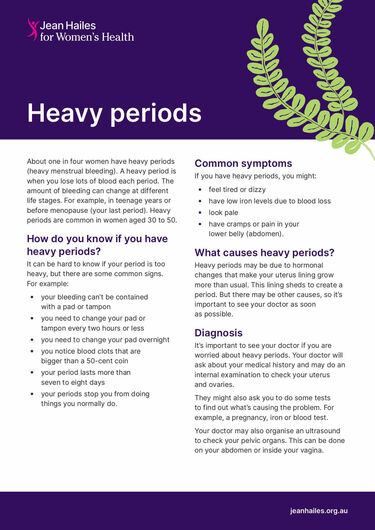 Foundationforwomenscancer.org [Foundation for Women’s Cancers, United States]
Foundationforwomenscancer.org [Foundation for Women’s Cancers, United States]- Gynecologic Cancers
- Gynecologic Cancers: What Are the Symptoms?
- Gynecological Cancers
- Heavy Periods
- Heavy Periods
- Heavy Periods
- Heavy Periods (Menorrhagia)
- Heavy Periods: Overview – Heavy Periods Self-Assessment
- Later Years (Around 50 Years and Over): Menopause and Post Menopause Health – Signs and Symptoms of Menopause [+ Video: Talking Menopause With Your GP] [Other Languages and Formats]
- Let’s Talk About Perimenopause
- Mayo Clinic Minute: Perimenopause and Menopause [+ Video]
- Mayo Clinic Minute: Tips From A Gynecological Surgeon on Recovery From Surgery [+ Video Courtesy: Mayo Clinic News Network]
- Mayo Clinic Q and A: Spotting, Perimenopause and Menopause
- Menopause
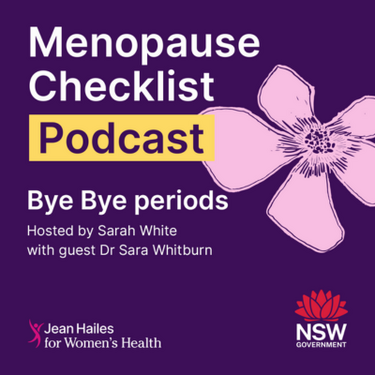 Menopause
Menopause- Menopause
- Menopause
- Menopause Checklist Podcast: Episode 2: Bye Bye Periods
- Menopause Map: Downloadable Resources – My Personal Path Print Tools: Questions for Your Health Care Provider
- Menopause Map: Downloadable Resources – My Personal Path Print Tools: Symptom Tracker
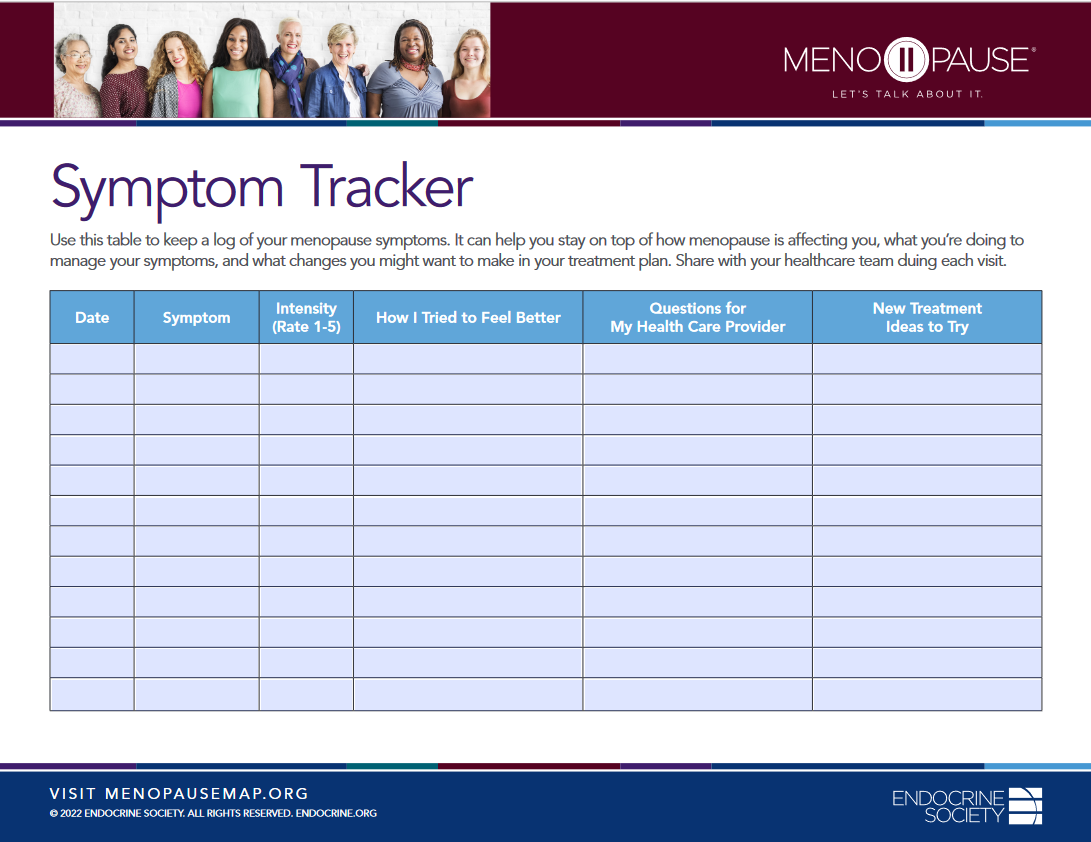
- Menopause Map: Downloadable Resources – Stages of Menopause: Perimenopause
- Menopause Patient Information [Videos] 2. Talking To Your GP About Menopause
- Menopause Preparedness Toolkit Video Series: Understanding Menstrual Health and Menopause
- Menopause What Are the Symptoms?
- Menopause: Ensuring A Tranquil Transition
- Menopause: Symptoms – Changes To Your Periods
- Menopause: Understanding the Changes and Finding Relief | Dr Susan Davis | The Proof Podcast EP 256
- Menorrhagia (Heavy Menstrual Bleeding)
- Menstrual Calendar
- Menstrual Calendar: Calendario Menstrual [Spanish]
- Menstrual Calendar: Calendrier Menstruel [French]
- Menstrual Cycle
- Menstrual Cycle: What’s Normal, What’s Not
- Menstrual Cycle: What’s Normal, What’s Not – How Can I Track My Menstrual Cycle?
- Menstrual Hygiene Day [28 May]
- Mymenoplan.org [My Menoplan, United States]
- My Periods Have Changed. Is Menopause Around the Corner?
- National Center for Complementary and Integrative Health: How Safe Is This Product or Practice?
- Navigating Menopause: Honest Answers To All Your Questions [+ Video: What To Expect in Menopause]
- Ovarian Cancer/Primary Peritoneal
- Peri-Menopause and Irregular Periods
- Perimenopausal and Postmenopausal Bleeding
- Perimenopause
- Perimenopause
- Perimenopause and Menopause Checklist: Translated Checklists
- Perimenopause and Menopause Symptom Checklist
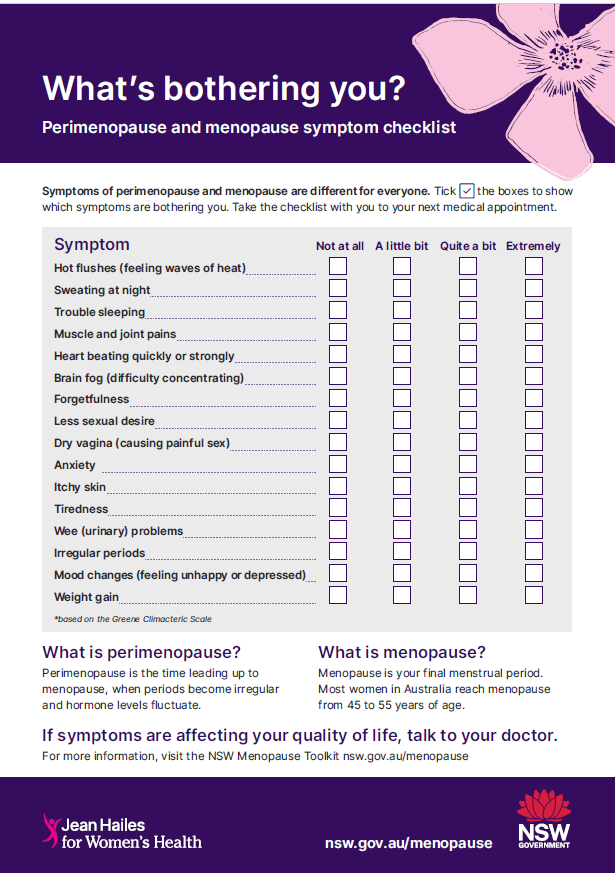
- Perimenopause or Menopausal Transition
- Periods
- Periods
- Periods: Overview – Menstrual Cycle: Animation
- Periods: Period Problems
- Premenstrual Syndrome (PMS)
- Premenstrual Syndrome (PMS)
- The Eve Appeal [United Kingdom]
- Tips To Help Manage Menopause Symptoms
- Tips for Tracking Your Bleeding
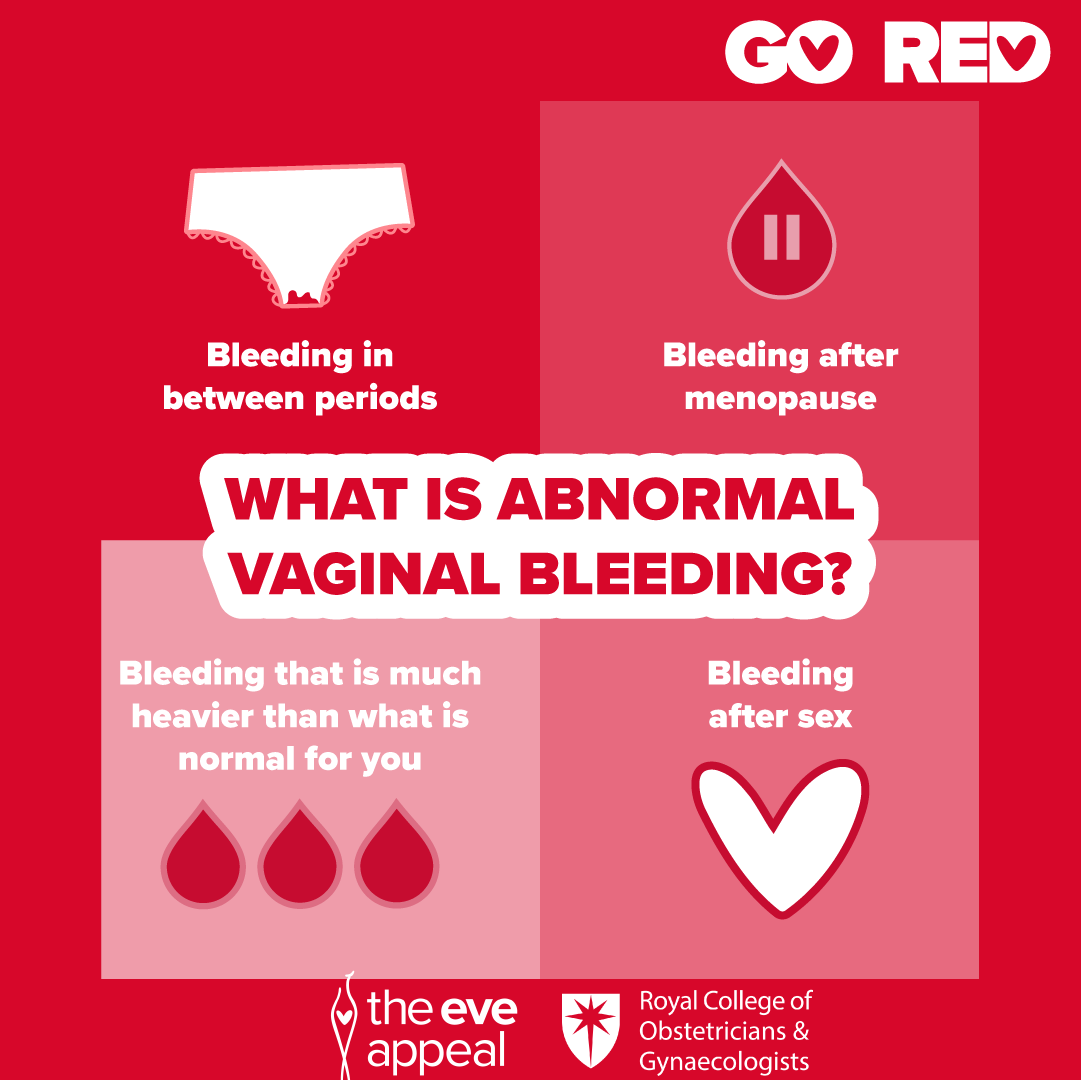
- Uterine Bleeding: Abnormal Uterine Bleeding
- Uterine/Endometrial Cancer/GTD
- Vaginal Bleeding
- Vaginal Cancer
- Video Series-2022: Irregular Menstrual Cycles What’s Normal and What’s Abnormal?
- Video Series-2022: Perimenopause: Signs, Symptoms, and Solutions
- Video Series-2024: Preparing for Your Menopause Health Care Visit
- Video: Researchers Emphasize Normalization of Menopause
- Videos and Podcasts: Videos – Interviews: A Simple Approach To Menopause: The Menopause Quick Six (www.MQ6.ca)
- Videos and Podcasts: Videos – Interviews: Menopause and Abnormal Bleeding
- Vulvar Cancer
- Webinars: Previous – Abnormal Uterine Bleeding In Perimenopausal and Postmenopausal Women
- What Are Heavy Periods?
- What Causes Bleeding Between Periods?
- What Everyone Should Know About Menopause Symptoms
- What Is An Endometrial Biopsy?
- What Is Endometriosis?
- What Is Menopause?
- What Is Menopause?
- What Is Menopause? [+ Video]
- You Need To Know [+ Video: Bleeding After the Menopause – An Important Message You Need To Know]
Sources
Where may I find the Sources quoted?
You may find the Sources quoted at:
Sources
- Perimenopause: How Do I Know If Changes In My Periods Are Normal Perimenopausal Symptoms or Something To Be Concerned About? Last Reviewed: 05 October 2021. Cleveland Clinic https://my.clevelandclinic.org/health/diseases/21608-perimenopause Accessed: 15 July 2024
- What Is Menopause? What Is Perimenopause (The Menopausal Transition?). Content Created May 2022. Australasian Menopause Society https://www.menopause.org.au/hp/information-sheets/what-is-menopause Accessed: 15 July 2024
- What Is Menopause? What Is Perimenopause (The Menopausal Transition?). Content Created May 2022. Australasian Menopause Society https://www.menopause.org.au/hp/information-sheets/what-is-menopause Accessed: 15 July 2024
- Menstrual Calendar. 2015. North American Menopause Society https://www.menopause.org/docs/default-source/2015/menonote-menstrual-calendar-english.pdf Accessed: 15 July 2024
- Mayo Clinic Q and A: Spotting, Perimenopause and Menopause. 21 December 2020. Mayo Clinic https://newsnetwork.mayoclinic.org/discussion/mayo-clinic-q-and-a-spotting-perimenopause-and-menopause/ Accessed: 15 July 2024
- Perimenopausal and Postmenopausal Bleeding. 2022. European Menopause and Andropause Society https://emas-online.org/wp-content/uploads/2022/05/Perimenopausal-and-postmenopausal-bleeding.pdf Accessed: 15 July 2024
- Menstrual Calendar. 2015. North American Menopause Society https://www.menopause.org/docs/default-source/2015/menonote-menstrual-calendar-english.pdf Accessed: 15 July 2024
- Perimenopause: How Do I Know If Changes In My Periods Are Normal Perimenopausal Symptoms or Something To Be Concerned About? Last Reviewed: 05 October 2021. Cleveland Clinic https://my.clevelandclinic.org/health/diseases/21608-perimenopause Accessed: 15 July 2024
- Your Period: When To See Your Doctor. Last Updated: 12 July 2024 | Last Reviewed: 25 March 2024. Jean Hailes for Women’s Health https://www.jeanhailes.org.au/health-a-z/periods/your-period Accessed: 15 July 2024



